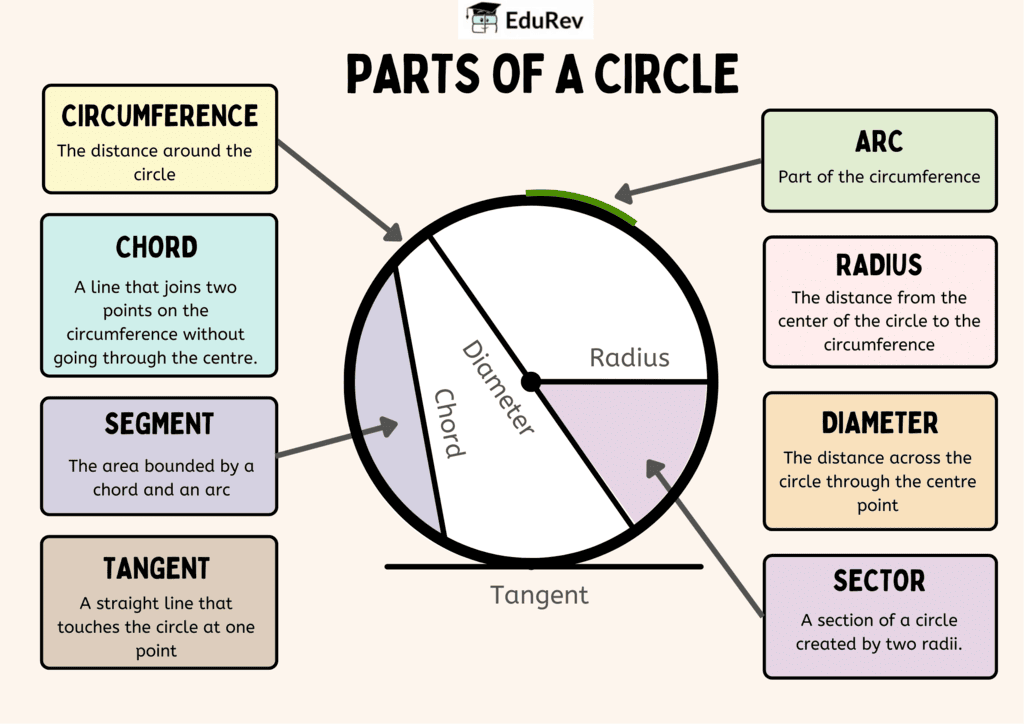Class 5 Exam > Class 5 Notes > Mathematics for Class 5 > Infographics: Parts of Circle
Infographics: Parts of Circle | Mathematics for Class 5 PDF Download

The document Infographics: Parts of Circle | Mathematics for Class 5 is a part of the Class 5 Course Mathematics for Class 5.
All you need of Class 5 at this link: Class 5
|
56 videos|187 docs|40 tests
|
FAQs on Infographics: Parts of Circle - Mathematics for Class 5
| 1. What are the main parts of a circle? |  |
Ans. The main parts of a circle include the center, radius, diameter, circumference, and chord. The center is the point equidistant from all points on the circle. The radius is the distance from the center to any point on the circle, while the diameter is twice the radius and passes through the center, connecting two points on the circle's edge. The circumference is the total distance around the circle, and a chord is a line segment connecting two points on the circle.
| 2. How do you find the circumference of a circle? |  |
Ans. The circumference of a circle can be found using the formula C = 2πr, where C is the circumference and r is the radius. Alternatively, if you know the diameter (d), you can use the formula C = πd. This gives you the total distance around the circle.
| 3. What is the difference between radius and diameter? |  |
Ans. The radius is the distance from the center of the circle to any point on its boundary, while the diameter is the distance across the circle, passing through the center and connecting two points on the boundary. The diameter is always twice the length of the radius.
| 4. What is a chord in a circle? |  |
Ans. A chord is a line segment whose endpoints lie on the circumference of the circle. Unlike the diameter, which is the longest chord, other chords can vary in length but must still connect two points on the circle.
| 5. Why is the center of a circle important? |  |
Ans. The center of a circle is important because it serves as the focal point from which all other measurements, such as radius and diameter, are derived. It is also crucial for defining the circle's symmetry and for calculations involving areas and circumferences.
Related Searches





















